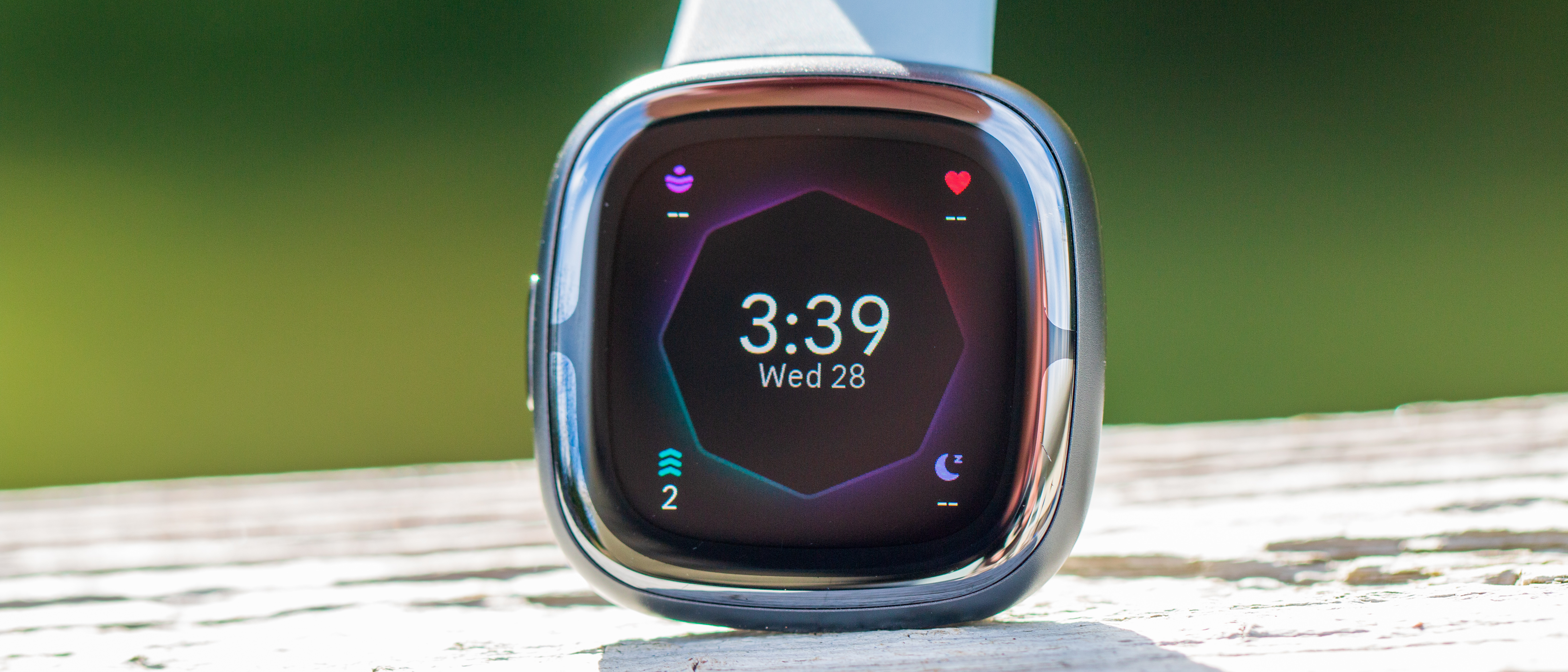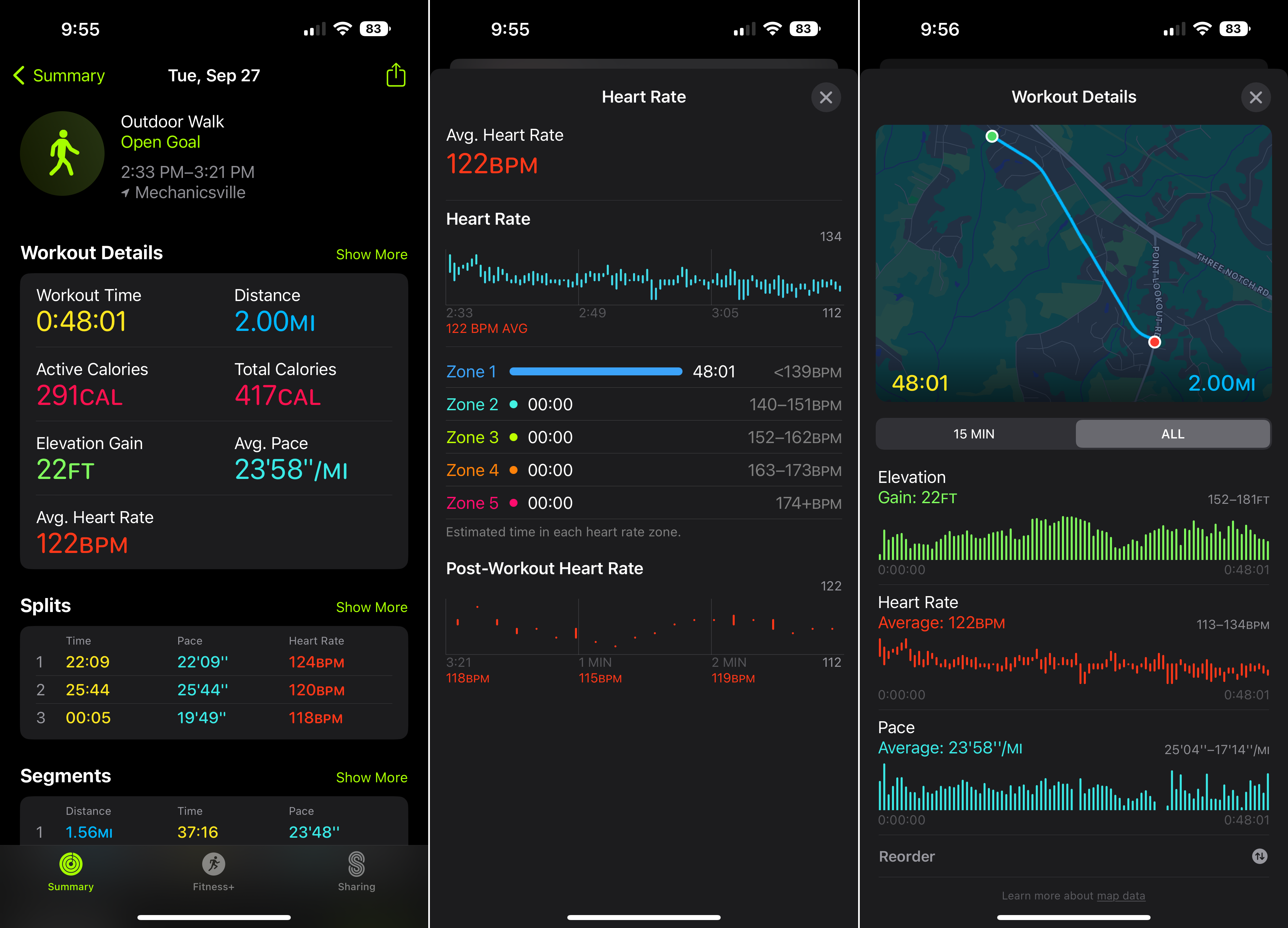Android Central Verdict
From a fitness and health tracking standpoint, the Fitbit Sense 2 has a lot to offer, especially thanks to the included Premium membership. The overhauled interface is much more pleasant to interact with, while the physical button is excellent. But we still have to wait for Google Maps and Wallet to arrive, and there's no sign that Assistant will be arriving any time soon, if at all.
Pros
- +
The physical button is a much-needed improvement
- +
Interface overhaul
- +
Up to six days of battery life
- +
Lighter and slimmer than its predecessor
Cons
- -
Maps and Wallet coming "later"
- -
Only one size is available
- -
No Google Assistant
- -
Can't stream or download music
Why you can trust Android Central
It's been about two years since Fitbit released its most feature-rich smartwatch ever in the Fitbit Sense. We've been waiting with bated breath for a successor, and when the Sense 2 was unveiled, there was a lot of excitement. Not only does the Sense 2 offer a slimmer and lighter design, but there aren't any sacrifices to the battery life or missing health tracking sensors.
But what was really exciting was the overhauled interface, as we are finally starting to see Google's influence on Fitbit's products. Taking things even further, Fitbit announced that Google Maps and Google Wallet would be available on the Sense 2, seemingly offering a viable competitor to the Galaxy Watch 5 and upcoming Pixel Watch. However, after spending some time with the Sense 2, you might be surprised by what Fitbit's flagship smartwatch actually offers.
Fitbit Sense 2: Price and availability
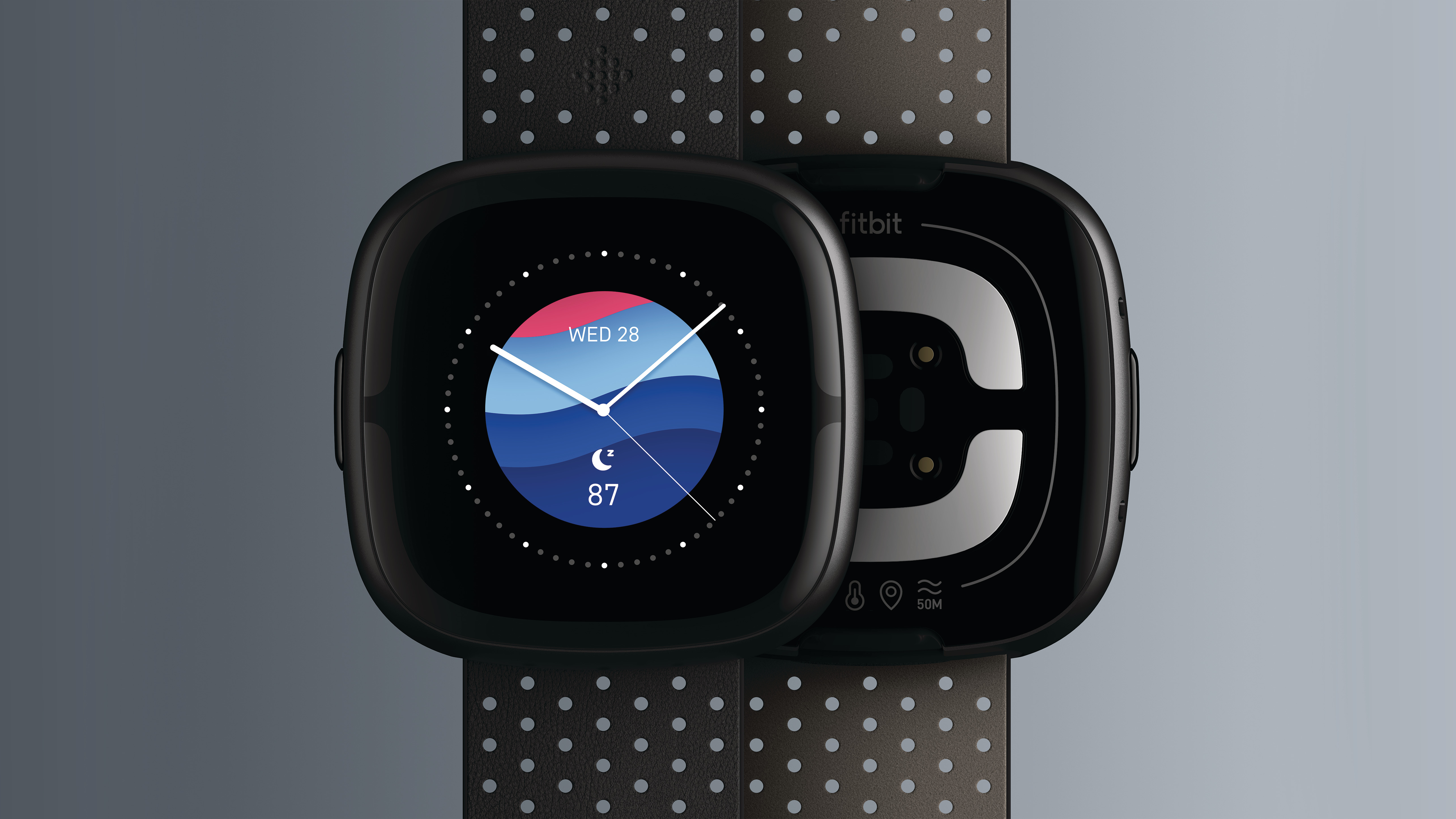
The Fitbit Sense 2 was announced in late August, before being officially released in September 2022. Its stated retail price is $300, which matches up with what the original Sense was priced at following a rather immediate price cut down from $330. The Sense 2 is available in three different color combinations — Shadow Grey / Graphite Aluminum, Lunar White / Platinum Aluminum, Blue Mist / Soft Gold Aluminum — and is available in just one size. It's currently available from many popular retailers, including directly from Fitbit, Google, and Amazon.
| Category | Fitbit Sense 2 specs |
|---|---|
| Display | 1.58-inches, AMOLED |
| Resolution | 336 x 336 |
| Dimensions & weight (255) | 40.5 x 40.5 x 11.2mm, 37.64 grams |
| Battery | 6+ days |
| Charging | 0-100% in two hours, 12 minutes to get one day of battery life |
| Sensors | GPS/GLONASS/, HRM, altimeter, skin-temperature, gyroscope, accelerometer, ambient light, SpO2, cEDA |
| Water resistance | Up to 50m |
| Connectivity | NFC (Fitbit Pay/Google Wallet), Bluetooth, Wi-Fi (turned off) |
| Music Storage | 🚫 |
| Mic and speaker | ✅ |
| Colors | Shadow Grey / Graphite, Lunar White / Platinum, Blue Mist / Soft Gold |
| Voice Assistant | Amazon Alexa |
Fitbit Sense 2: Hardware and design

Over the past couple of months, I've had the pleasure of testing out quite a few different fitness trackers and smartwatches. But the Fitbit Sense 2 has been on my own radar, and the excitement only grew following the official announcement. Leading up to the unveiling, we were expecting a successor to the original Fitbit Sense, including all of the same great health and fitness tracking features.
One of the biggest gripes I had with the original Fitbit Sense was the implementation of the touch-sensitive button on the side. When it worked, it worked fine, but more times than not, I would just give up and use the touchscreen to navigate through the interface. Thankfully, Fitbit listened to its community and finally brought back the physical button on the left side.
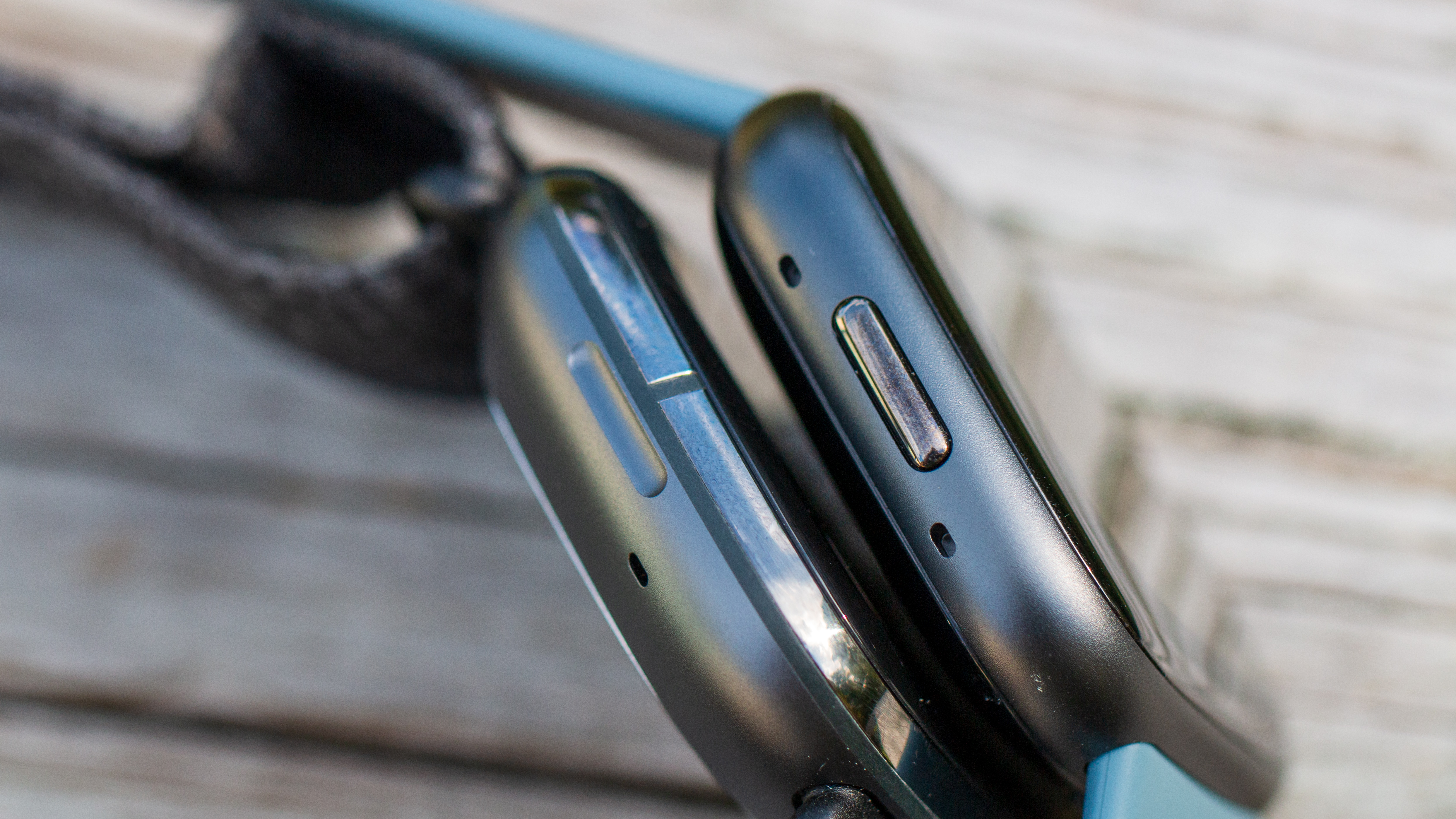
If you're upgrading from the Sense, you'll be pleased to know that you won't have to get rid of your favorite bands. While the Sense 2 is lighter and thinner than its predecessor, band compatibility remains the same, so you can mix and match, without needing to start over from scratch with your watchband collection.
In addition to the physical button and the slimmer design, Fitbit also redesigned the layout of the sensors on the bottom. Much like we saw with the Galaxy Watch 5, this aims to provide more accurate readings as the flatter bottom should provide more accurate readings.
Get the latest news from Android Central, your trusted companion in the world of Android
Something else that surprised us was that Fitbit was able to slim down the overall design, while still maintaining the same six+ days of battery life with the Sense 2. These advertised numbers are definitely achievable, but you'll need to make sure that the Always-on Display is turned off, and you likely won't be tracking any workouts. In the time we've spent with the Sense 2, we managed to get about 4 days with a couple of workout sessions thrown in there. Which is honestly, still pretty darn good.
Fitbit Sense 2: Health and fitness

Unlike some of my other counterparts here at Android Central, I'm not someone who trains for marathons, and instead, just go for walks and the occasional round of golf. Luckily, there's a trail that is just a stone's throw from my home, so I decided to run a bit of a test between the Sense 2 and the new Apple Watch Ultra, just to see how they would stack up.
The "test" consisted of walking down the path for two miles with a smartwatch on either wrist, then swapping them after two miles and walking back. There can definitely be some variation, depending on what wrist you are wearing, so I decided this was the best way to get an idea of how the Sense 2 actually performed.
When comparing the Average Heart Rate, there wasn't much deviation here, as the Sense 2 measured a 120 bpm average whereas the Ultra provided a 122 bpm average. But that was pretty much where the similarities ended, as the Sense 2 showed that I burned 549 calories and the Ultra showed 417 calories burned.

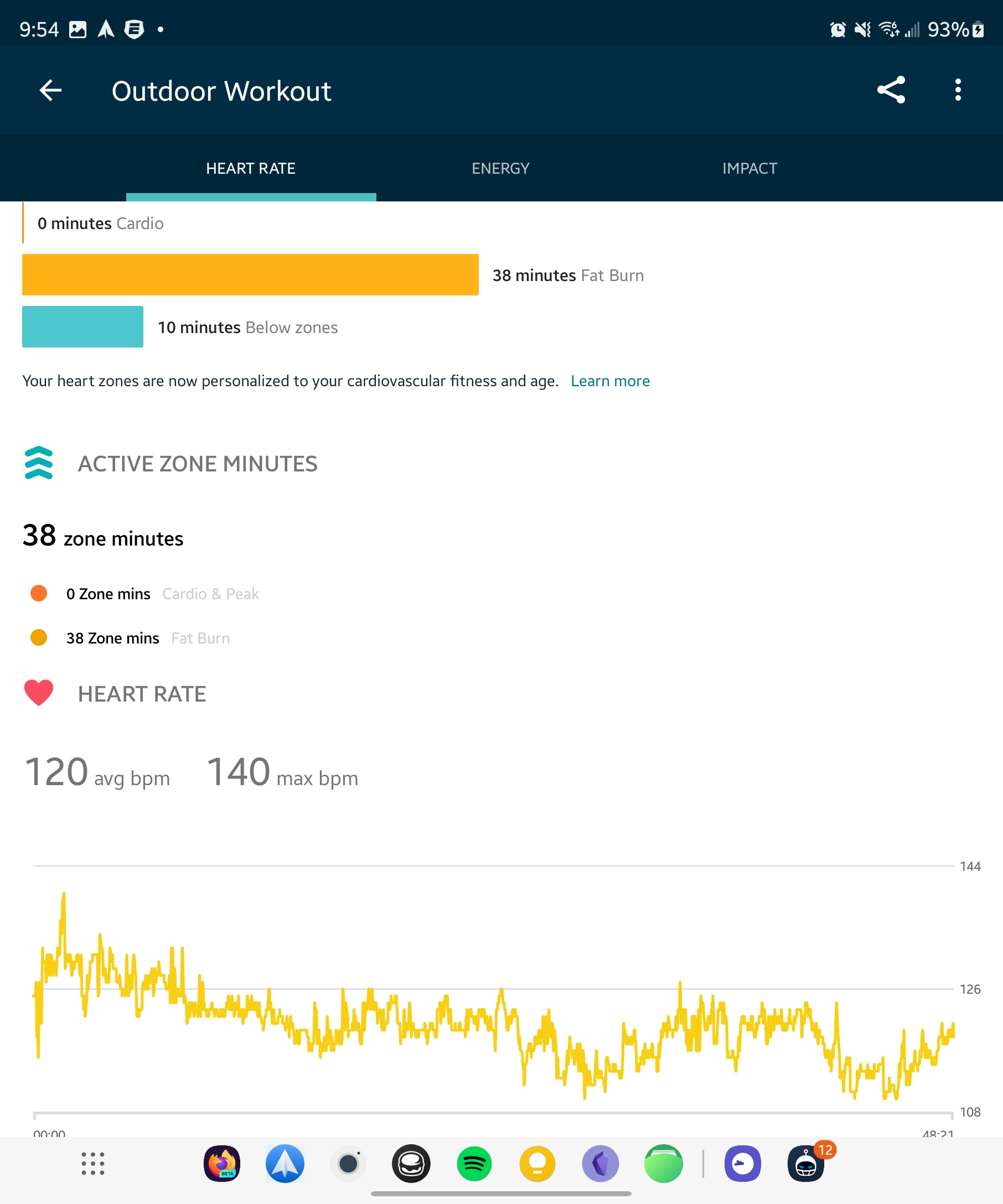

But the most head-scratching difference came in the actual distance that I walked. Thanks to mile markers placed on the trail (and confirmed using Google Maps), the distance was two miles, as shown on the iPhone.
For whatever reason, the Sense 2 measured a distance of 2.12 miles on the first walk (on the left wrist) and 2.15 miles on the second walk (on the right wrist). It was really rather confusing, and I don't really have a good explanation for it, especially since the distance was accurately tracked by the Apple Watch and using the physical mile markers.
Moving over to sleep tracking, Fitbit doesn't disappoint with its Sleep Score feature that combines your time asleep, Deep and REM sleep, along with "Restoration" to give you an indication of how well you slept.
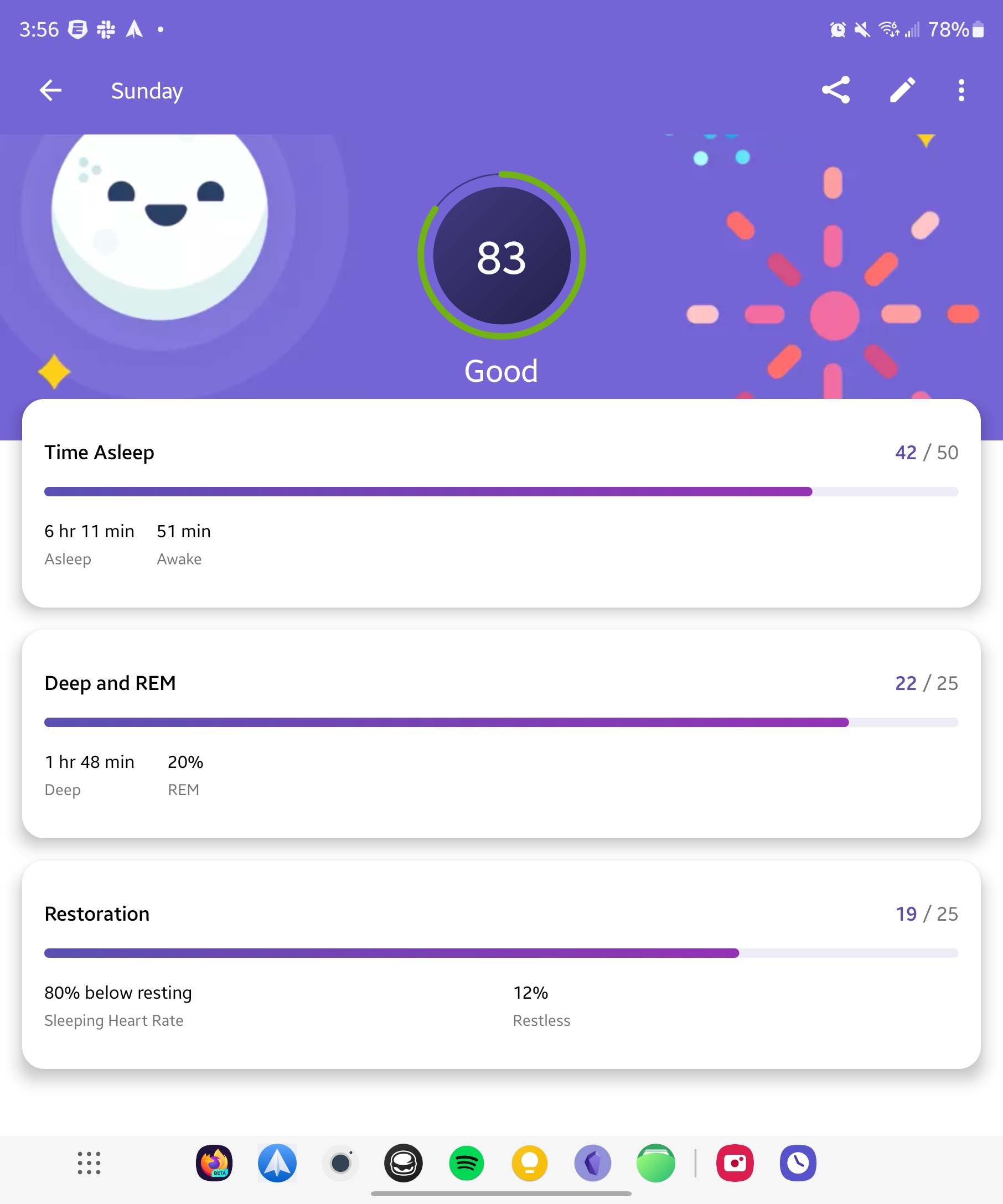
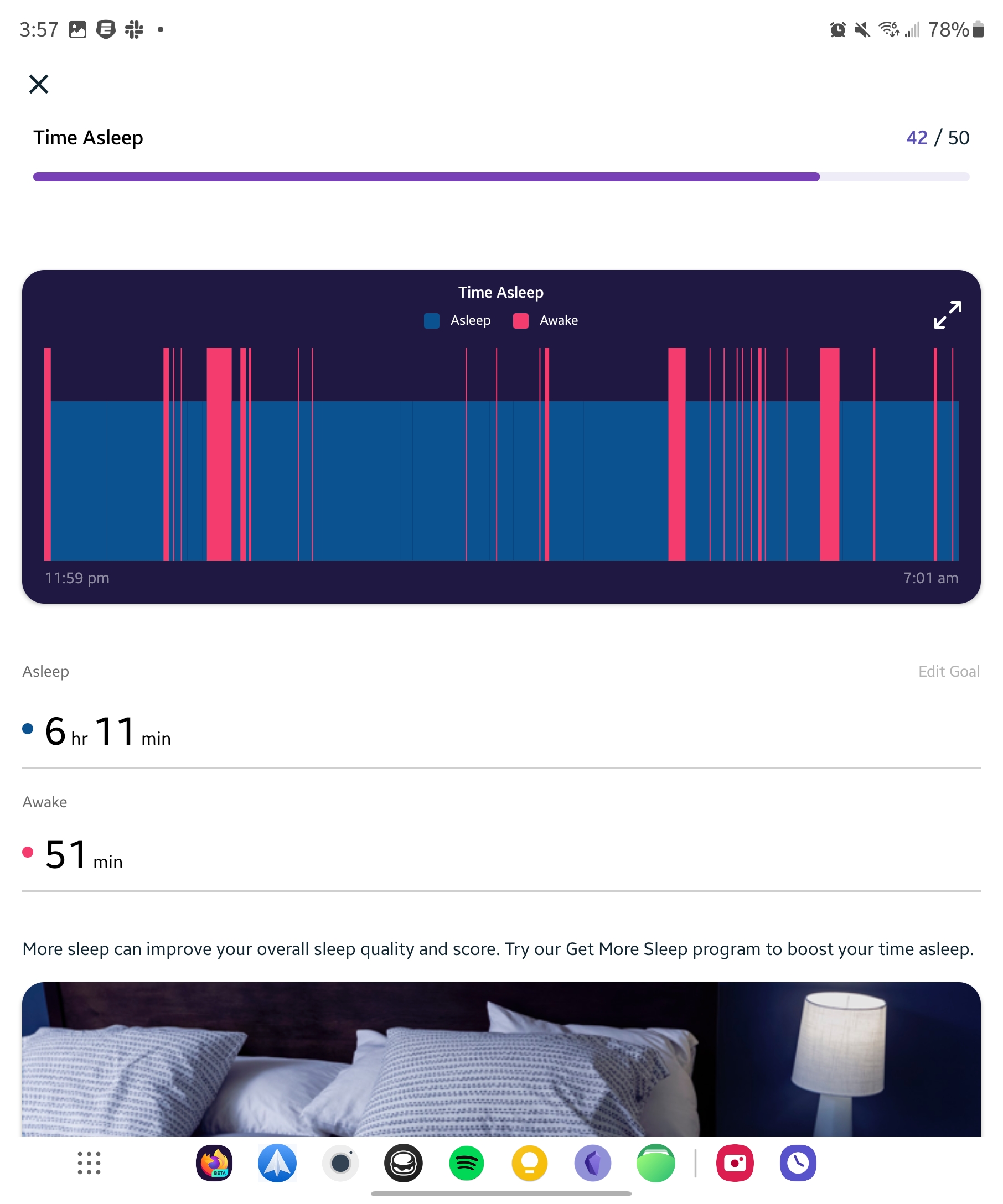
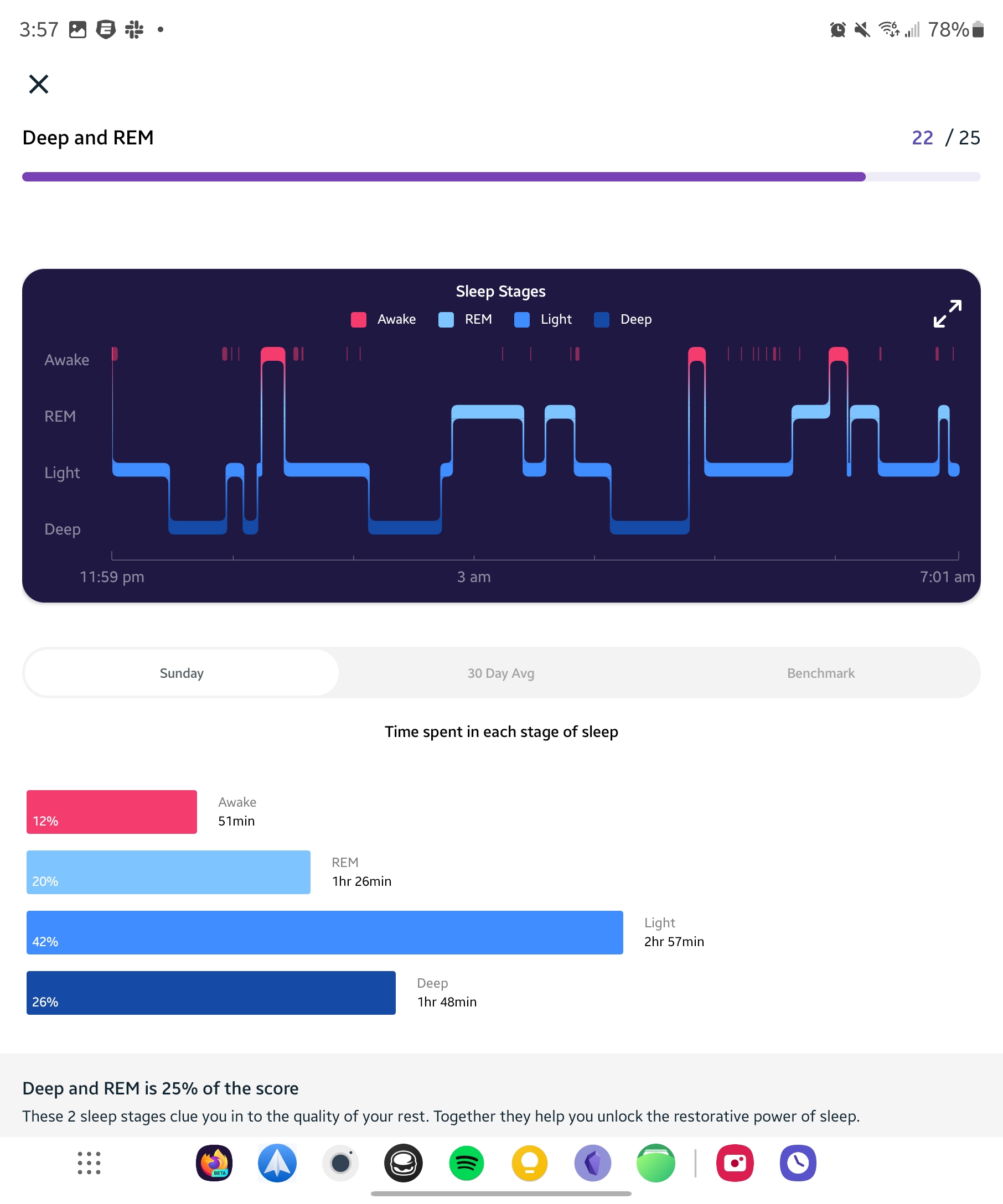
Tapping each of these sections, provides more in-depth information, such as a graph showing you the different stages of your sleep over the course of a night. And when you use the Sense 2 consistently, you'll also get a "Sleep Profile" complete with a "sleep animal" which adds a bit of fun to sleep tracking. It also provides tips and tricks that you can try and implement to ensure that you wake up feeling rested.
Fitbit Sense 2: What's still missing

As we've pointed out, there are a few things that Fitbit still needs to implement in order to provide the "full" Sense 2 experience. Ignoring Google Assistant, Maps and Wallet should be on the horizon, we just don't have an idea as to when they will arrive. But when they do, we wouldn't be surprised if Fitbit Pay goes to the way-side completely.
Perhaps even more surprising is the decision to "turn off" the onboard Wi-Fi module for the Sense 2, and the Versa 4 for that matter. According to Fitbit, Bluetooth will be used for all of the different data transfers that need to be completed, including software updates and the installation of different apps or watch faces.
We're also disappointed to see that you won't be able to use any type of music streaming service, let alone manually download playlists, to your Sense 2. With its latest smartwatches, Fitbit has removed the ability to use Deezer or Pandora, meaning that you'll need to rely on your phone to provide some background music during your workout sessions. And unlike some of the other features which are slated to arrive later, it seems that Fitbit is moving away from this functionality altogether for its wearables.
Fitbit Sense 2: The competition

The competition in the smartwatch market is fierce, especially now, as the Galaxy Watch 5 has been available for a couple of months, and is less expensive than the Sense 2. Not only is the Watch 5 running Wear OS 3, but this also gives you access to all of Google's services, including Wallet, Maps, and Assistant, right on your wrist. It also comes in two different sizes, giving users a bit more flexibility.
As for non-Wear OS 3 smartwatches, the recently-reviewed Garmin Venu Sq 2 is a formidable opponent to the Sense 2. Its starting price comes in below the Sense 2, at $249, but there's also a Venu Sq 2 - Music Edition for those who want to leave their smartphone behind. And while you won't have access to Google's services, the Venu Sq 2 is one of the best smartwatches for those who care more about health and fitness tracking.
And lurking around the corner is Google's own Pixel Watch, which is finally slated to arrive in the very near future. Not only does this bring Google's flavor of Wear OS 3, but it's also expected to feature deep Fitbit integration. There are still a few questions remaining when it comes to the Pixel Watch, such as starting price, but we'll have to revisit that when Google's first smartwatch actually arrives.
Fitbit Sense 2: Should you buy it?
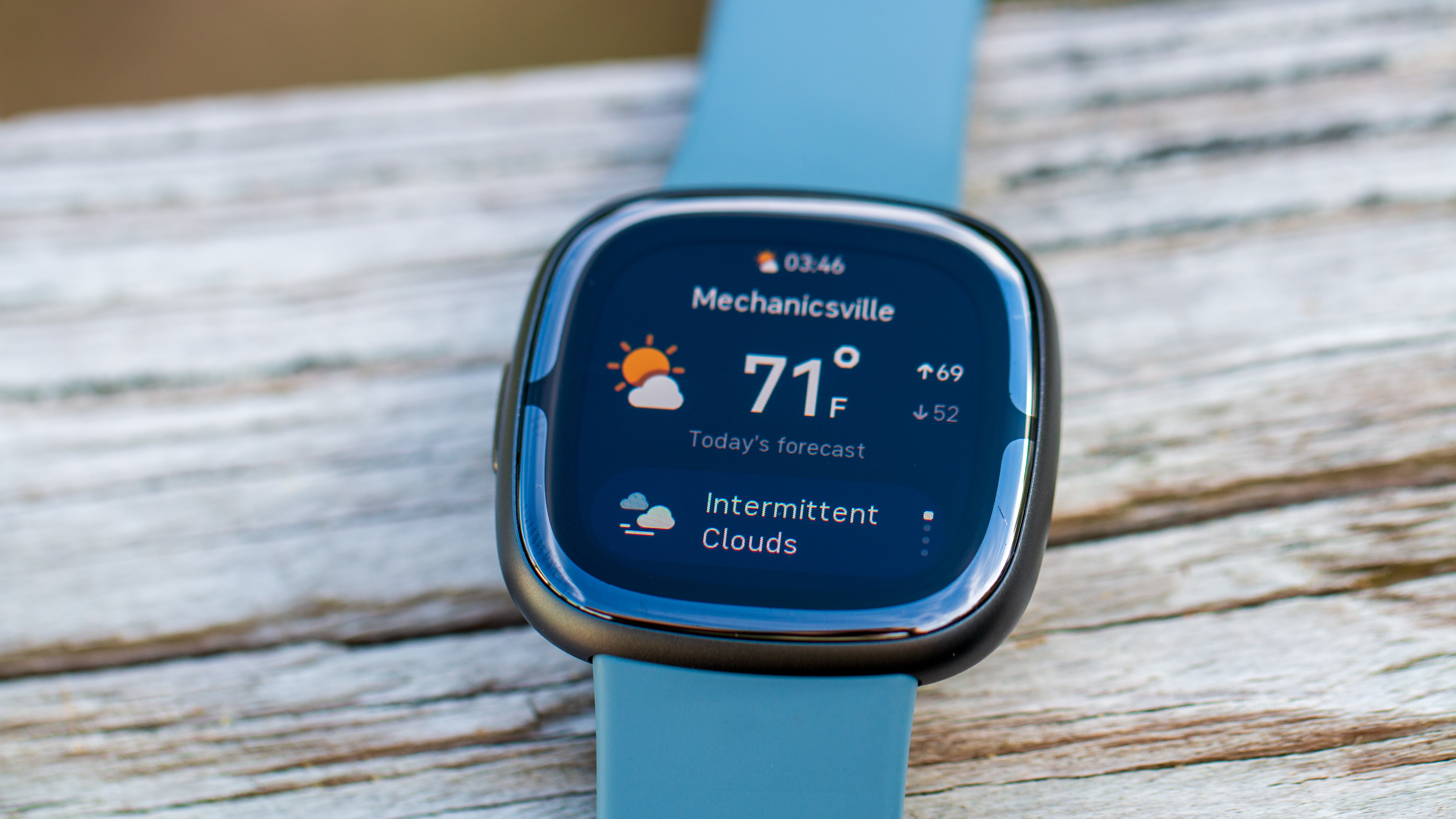
You should buy this if...
- You want the most powerful Fitbit smartwatch available.
- You want to (eventually) use Google Maps and/or Wallet on a Fitbit wearable.
- You want to enjoy the revamped software interface.
- You aren't on a budget.
You shouldn't buy this if...
- You want to listen to music on your smartwatch.
- You don't want to wait for Google Wallet and Maps to arrive.
- You need a smartwatch with Wi-Fi connectivity.
My first impressions of the Sense 2 were that this was more of an iterative update, similar to what we've seen from Apple with the Watch Series 8 and Samsung with the non-Pro Galaxy Watch 5. But as I spent more time with the Sense 2, I realized that decisions such as disabling the Wi-Fi chip, along with being unable to stream music from your wrist, are just kind of baffling.
As a health and fitness-first smartwatch, the Sense 2 should definitely be on the radar for anyone. It stacks up quite nicely with some of the other options on the market, even with random variances when comparing workouts with a watch that costs almost three times as much. Fitbit has also done wonders with the different features such as offering the Sleep Score and the ability to keep track of basically everything you would want from a health-focused wearable.
I'm also a big fan of the software changes, as the interface just looks better than what you'll find on previous Fitbit smartwatches. The different gestures take a bit of time to get used to, but they're still pretty intuitive. And the addition of the physical button on the side is just icing on the cake when interacting with your smartwatch.
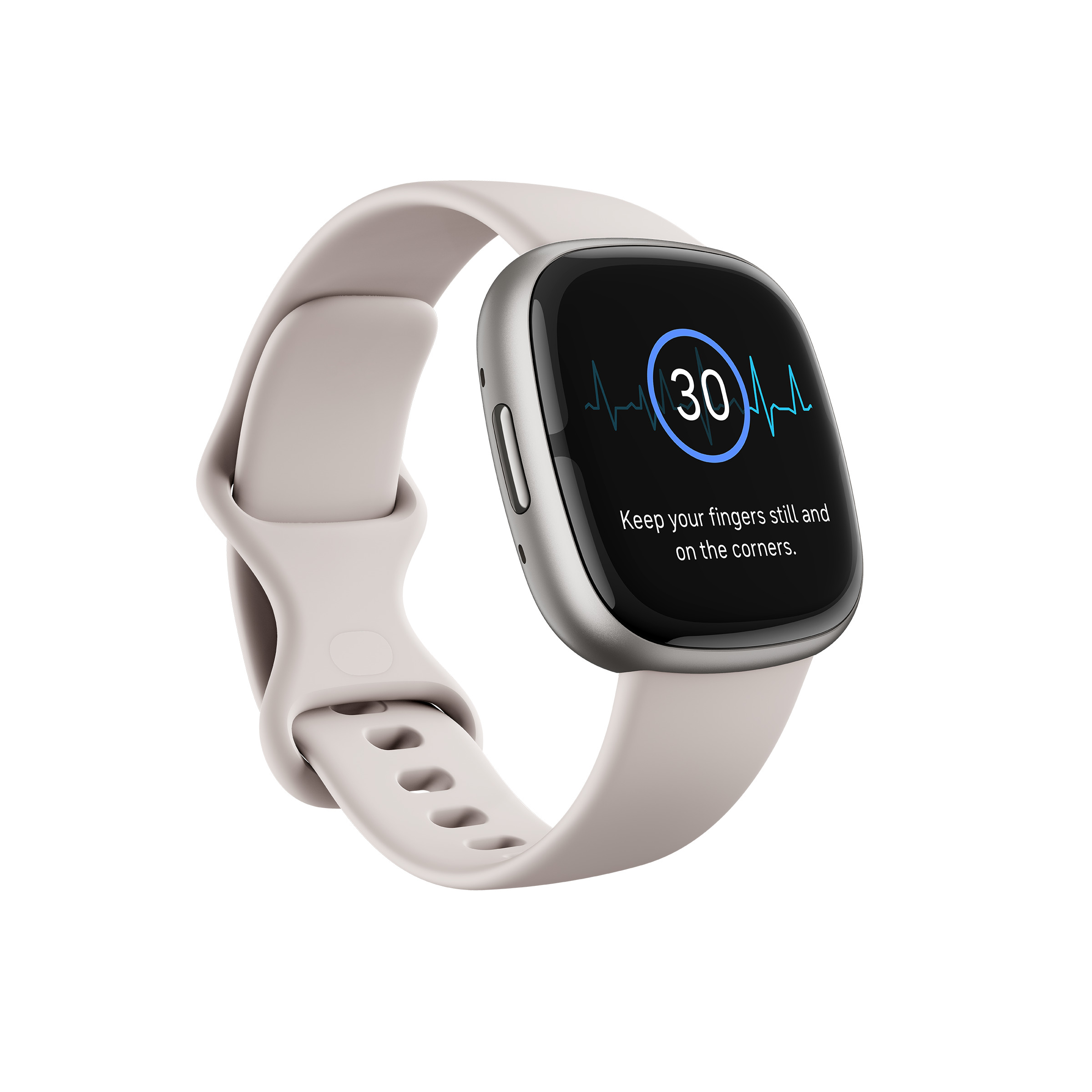
Still great, for some
The Fitbit Sense 2 is a balancing act of sorts, as there were improvements made in some areas, while other features have been removed. Overall, it's a great smartwatch, but you'll have to make some compromises if you pick the Sense 2 over comparable smartwatches.

Andrew Myrick is a Senior Editor at Android Central. He enjoys everything to do with technology, including tablets, smartphones, and everything in between. Perhaps his favorite past-time is collecting different headphones, even if they all end up in the same drawer.
